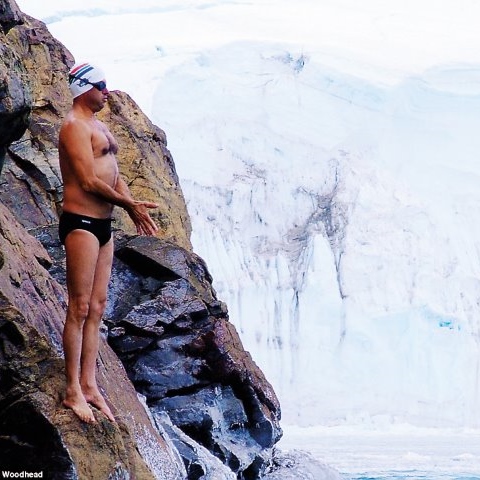
News

Barkai sets ice swim record in the South Pole
JACK MILNER
But, then he started ice swimming, which is a whole new ball game. Swimming in the icy waters of Siberia, Iceland, and crossing the Bering Strait that separates Russia from the United States became almost the norm.
While people have swum in the Antarctic, there has not been an official timed swim. Barkai decided it was time to change that. On 25 November, he successfully led 14 ice swimmers from across the globe to complete the first official 1km ice-swim at the bottom of the earth, setting a Guinness World Record in the process.
While others pack their thickest jackets to visit the South Pole, these ice swimmers appeared in Speedos on rubber ducks to swim in minus 1.4°C waters.
Swims like these are not performed without some back-up. Support staff, accompanied by South African emergency physician Dr Sean Gottschalk, were there to rescue the swimmers should anything go wrong. However, they were in peak form, and everything went smoothly.
Ice swimming is a little like travelling on a space shuttle. You have to wait for the perfect weather to start the swim. The weather changed constantly, interrupting the event, and last Thursday, a test swim was finally performed, after which Barkai agreed to Port Lockroy as the location for the swim. The strategy involved heats of three or four swimmers, accompanied by support and rescue staff in rubber ducks.
After two successful heats comprising seven swimmers, the currents and wind started to create havoc, forcing the swimmers to find another location. They moved to Mikkelsen Bay, but had a very narrow weather window to complete the swim, and decided to combine heats three and four, which was their only hope of completing the swim by all the participants.
Barkai was last away, but once again, he had to wait for a weather gap before he could complete the swim.
Then it was time for Gottschalk to do his bit. Normal body temperature is 37°C, but the core body temperature of some of the swimmers measured only 28°C in recovery after the swim. Recovery involved quickly accessing the expedition ship’s sauna and jacuzzi under close supervision of Gottschalk.
“There are concerns that ice swimming is way too dangerous for the average person, but the individuals who are getting into ice swimming are anything but average,” observes Steven Munatones of the World Open Water Swimming Association.
“From what I have seen, the organisers and ice swimmers are as knowledgeable and experienced in the cold as they are responsible and safety-conscious. This sport attracts truly driven and unique individuals who are well-prepared physiologically and psychologically to handle swims of up to 1 000m – and longer – in the cold air and water temperatures lower than 5°C.
“After a decade of ice swimming, Barkai and his colleagues around the world have learned a significant amount about how much the human body can acclimatise to cold water, and how best to implement the rewarming process,” he told Daily News.
South African swimmers included Barkai, Jean Craven, Samantha Whelpton, and Clinton Le Sueur. Others were from Poland, Russia, Australia, Argentina, Italy, China, Bulgaria, and Spain.
Barkai has completed many swims around the world.
When he moved to Cape Town in 1996, he joined a local swimming club, and started entering competitions. “I was always drawn to open water,” he is quoted as saying on the Discovery Health website. “The sea is cold here. And I love a challenge. In the water, you begin at 0°C with no easing into the cold – and you have to swim. You learn what to anticipate, and how to react.”
Preparation and recovery from each swim is vital. “If you’re not prepared, and don’t know what to do, you could panic,” Barkai said. “You have to remember to breathe after each stroke, and take it slowly. I discovered the significant mental-strength element to swimming in cold water. I’m more attracted to the power of the mind as opposed to the body, and using the mind to overcome adversity.”
Asked about his craziest swim, Barkai said, “I guess it was swimming in Tyumen, central Siberia, in 2012, when the air temperature was minus 33°C. As I swam, people were sweeping the water surface ahead of me to stop it from freezing.” It wasn’t just the swim that was challenging. Taking his clothes off fast enough to get into the “far warmer” 0°C water without suffering frost-bite was a major challenge, as was getting out of the water to get dressed.




